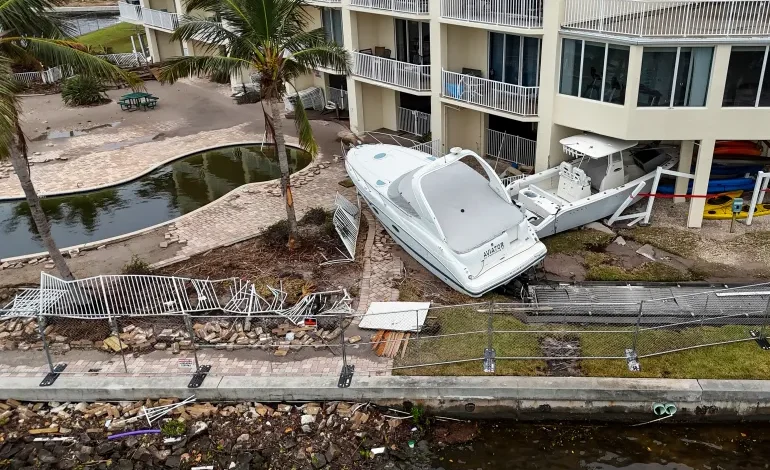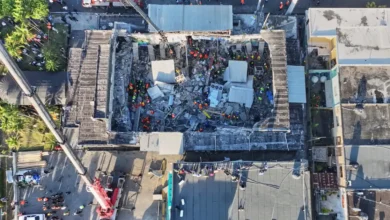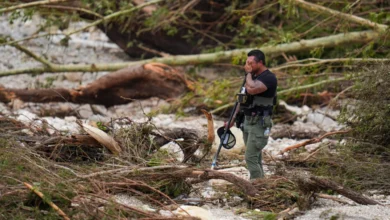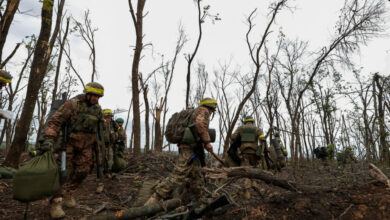Hurricane Helene devastates southeastern US, millions without power

People across five states in the southeast United States have been left stranded, without shelter and awaiting rescue after devastating Hurricane Helene killed at least 63 people and caused massive power outages.
More than 2.6 million customers were still without electricity across 10 states from Florida in the southeast to Indiana in the Midwest as of the wee hours on Sunday, according to tracker poweroutage.us.
The National Weather Service said conditions would “continue to improve Sunday” as it warned of possible “long-duration power outages”.
Helene slammed into Florida on Thursday as a Category 4 hurricane and surged north, gradually weakening but leaving a trail of destruction: uprooted trees, downed power lines and homes damaged by mudslides.
The Federal Emergency Management Administration (FEMA) said on Saturday it granted emergency declarations in six states – Alabama, Florida, Georgia, South Carolina, North Carolina and Tennessee – “to assist these states with preparation and response efforts in the immediate aftermath of the storm”.
At least 24 people died in South Carolina, 17 in Georgia, 11 in Florida, 10 in North Carolina and one in Virginia, according to local authorities and media tallied by the AFP news agency.
Now classified as a “post-tropical cyclone”, the remnants of the storm are expected to continue inundating the Ohio Valley and Central Appalachians through Sunday, according to the National Hurricane Center (NHC).
In affected communities across the eastern coast and Midwest, storm victims and volunteers toting rubbish bags, mops and hammers tried to repair what they could and clean up the rest.
“There’s only a couple of businesses open. They have a limited supply. So I’m just worried about families that have kids and stuff like that, getting somewhere to stay and have something to eat,” Steven Mauro, a resident of Valdosta, Georgia, told AFP.
‘It breaks my heart’
Helene blew into Florida’s northern gulf shore with powerful winds of 140mph (225kmph). Even as it weakened into a post-tropical cyclone, it wreaked havoc.
Record levels of flooding threatened to break several dams, but Tennessee emergency officials said on Saturday the Nolichucky Dam – which had been close to breaching – was no longer in danger of giving way and people downriver could return home.
Massive flooding was reported in Asheville, in western North Carolina. Governor Ray Cooper called it “one of the worst storms in modern history” to hit the state.
There were reports of remote towns in the Carolina mountains without power or cell service, their roads washed away or buried by mudslides.
In Cedar Key, an island city of 700 people off Florida’s Gulf Coast, several pastel-coloured wooden homes were destroyed by record storm surges and ferocious winds.
“I’ve lived here my whole life, and it breaks my heart to see it. We’ve not really been able to catch a break,” said Gabe Doty, a Cedar Key official, referring to two other hurricanes in the past year.
In South Carolina, the dead included two firefighters, officials said.
Georgia’s 17 deaths included an emergency responder, according to state officials.
In the Tennessee town of Erwin, more than 50 patients and staff trapped on a hospital roof by surging floodwaters had to be rescued by helicopters.










